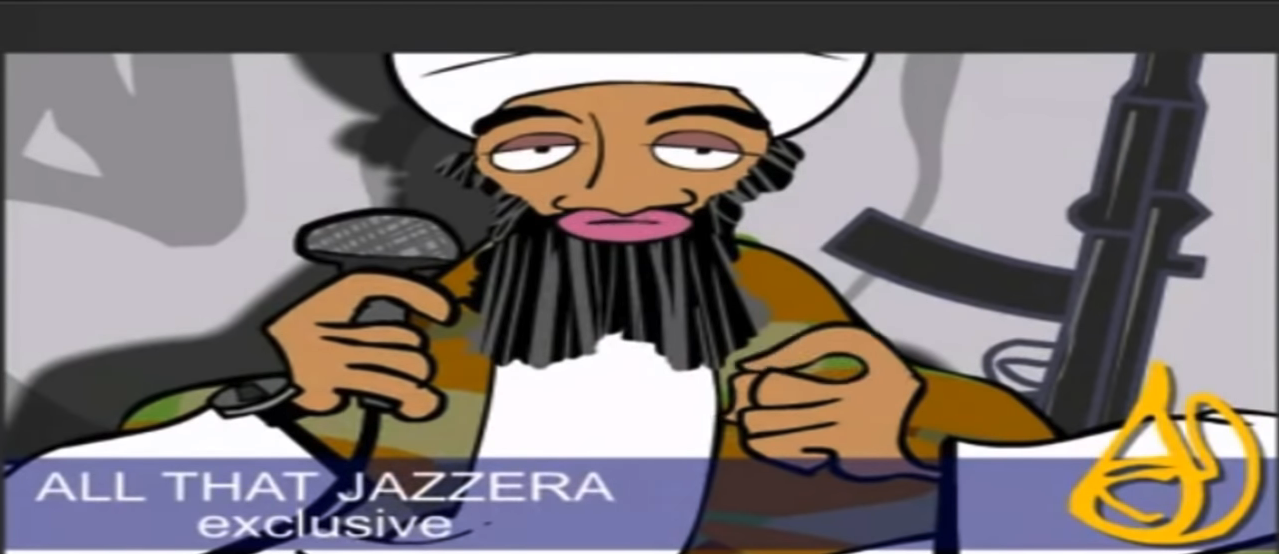Don Kretsch and Kuldip Oberoi discuss the new release, features and product names. More information here.
The Twitter Diaries: Aug 1-Sep 4, 2010
@NomdeB Namaste, Bitches Coffee Mug from Zazzle.com – yes, I’d love one from the company store! Gives guests pause 😉 #
EVP John Fowler to detail plans for Oracle’s servers, storage and operating systems MarketWatch #
@mtuckerb either that or we’re not on the same train! #
@blackbeltncrazy Masseur – I can do everything else myself. #
why is KPMG spamming my corporate email to tell me they’ll be at OOW? Yeah, so will I, we’ll all be working. So? #
tomorrow is Indian Independence Day, so prepare now: Learn India’s National Anthem #
@blackbeltncrazy Multicultural is not the same as multireligious. There are Muslims in and from many countries and cultures of the world. #
@blackbeltncrazy If something claims to be multicultural, it is a non-sequitur to slam it for not (also) being multireligious. #
@blackbeltncrazy Just not seeing how it’s relevant. Multicultural =/= multifaith. The two sometimes go hand-in-hand, but not necessarily. #
RT @Jo_Miller: How Smart Women Win at Office Politics http://ow.ly/2pPNR – useful for men as well! #
Hungry? An oldie-and-goodie about a day of fine food and wine in Italy’s Valtellina: Guests of Conti Sertoli Salis #
Hmm, shoulda known I’d seen that harpsichord before when I visited my cousin Celia at New Year’s #
For the record: my site was called Countries Beginning with I BEFORE that damned book was published. #
@italylogue Starting to wonder if the book was in fact to be titled Beginning with I and she had to change it because of my site… #
Ms Gilbert, reality is that few Italisn can afford to exquisitely and delightfully do nothing – someone has to pay for all that pasta. #
…just like most Indians can’t afford to spend much time in ashrams, nor Indonesians chasing down healers. #
RT @fraying: A few photos of stuff the same distance from the World Trade Center as the Ground Zero Mosque #
at least for /this/ engineering mtg I have been around the technology in question long enough not to feel like a complete idiot. #
@OReillyUG The Music Man, Rocky Horror Picture Show, Buffy series… #
a draft [of air] is considered extremely dangerous, causing anything from a cold to paralysis #

^ this place needed a big plant… And a refugee rat #
@italylogue scrivere la propria storia I suppose. #
Terms of Address: What to Call People in India #
some fun old videos I had forgotten about: The Lake Como Car Ferry #
how Rossella got her name #
India Videoblog: Jaipur How to Tie a Turban #
DTrace for Ruby is available Joyeur #
^ She keeps the Moet Chandon in a pretty cabinet… #

^ uh hmmm #
RT @mightygodking This is fab. Miss Ghana’s costume = glorious. Miss Kazakhstan’s, insane. – thanks, literally LOLing! #
@mkapor One former mental hospital got turned into a Sun Microsystems campus #
^Â #
I really hate the marketing crap I’m forced to listen to while on hold for customer service. I’m looking at you, Tivo, but all are guilty. #
is it normal as a US consumer to spend a lot of time on service requests? Calling to fix messed up accounts seems to take a lot of my time. #
Hate dealing with customer service because it takes several tries to get people to understand how to spell my name. Pronounce it? Hah! #
@mkapor Thank you for that. We’ve had enough cheap jokes around the Sun name. 😉 #
in the middle of a complex negotiation with AT&T about bad billing, the call drops. Will he call me back? #
@GeorgeTrujillo hmm #
apparently I should just start my own moving company. I seem to do a lot of shifting boxes around. #
If you’ve been wondering about my references to editing lately, here’s what that’s all about: http://amzn.to/daSQIQ (nope, not video!) #
Aside from editing, I also speak: 😉 Employees Making Videos: What’s working? What’s Not? – Communitelligence #
RT @Jason89 1 in 5 Americans think Obama is Muslim? Personally it bothers me that he’s Christian. I like to pretend he’s secretly an atheist #
@mamaswati To the people who are pushing the idea, yes, it is a smear. Or were you being disingenuous? #
Today’s schedule: medical nose torture, followed by a drive to MPK to move (more) boxes. But I think I get a dosa for lunch, yay! #
Turning up 15 minutes early for that appointment may in the long run prove to have been a life-changing event. #
@bubbva coming up next week: This is Nasal Tap! #
1 more load of stuff to bring up from the car; my apt is a temporary holding area for small expensive items that we don’t want to go missing #
@akumar they’re not the only ones. Hopefully they give you money instead and let you decide where to invest it. #
dreamed last night that the co. gave me a Blackberry, and I started crying for my iPhone. Not usually that tech-obsessed, IRL. #
What Is It About 20-Somethings? – http://nyti.ms/dljJMu I disagree that choices made in your 20s are forever. We all keep growing & changing #
Funny spam subject of the day: Give your thingy staying charge #
Final push on DTrace book this weekend (I’m copyediting all 1000 pages), lots of work to do – but I’m soooo sleepy. Gray SF weather no help. #
Was supposed to go to a film school BBQ this aft, now not sure I have the psychic energy to socialize with people I don’t know well. #
thanks to Teresa for remembering I wanted Legos and rescuing some from the moving recycle mound for me! #
A nudist colony outside Beaumont, Texas? Now you KNOW that story’s bullshit. #
@planspark But imagine what the German word for it would be! #
@charlvn I’ll just go warm up the Death Star, shall I? 😉 #
Give! #
Editing this book has done 2 things: tho I’ll never be an engineer, I’ve learned a LOT about DTrace. And remembered I’m a very good writer. #
Doing what all true blooded Americans do on Sunday morning: shopping. #
Italian satire: Learn Italian in Song: Tu Vuo Fa o Talebano #
^ the things I do for my company include acting as a temporary storage depot during the Great MPK Move #
@pelegri I’m still figuring out my native country after spending most of my life overseas. Much to love, but some things are just weird. #
RT @nicolamattina: Religious madness in Italy: every 7 yrs procession, men strike themselves w a nail-studded sponge #
An interior office with no windows. Without sunlight, I fall asleep. Well, I’m just as excited as I can be about this move. #
@ben It’s a productivity problem for me. There’s a reason I live in an apartment with huge windows and lots of sun – I need it. #
Now I have nothing to move from my MPK office – my ergo keyboard, USB hub, and lock cable have vanished. #
looks as if we finally get summer, now that I’ve bought tight skinny jeans that are way too warm in the heat… #
@jlb13 @jczorkmid what’s a vacation? #
^ keeping me busy: the Books for Engineers giveaway. #
Even when you’ve known for a while it was bound to happen, you’re still sad when it finally does. #
@reiger I’m not sure I have one. If I did, I broke it ages ago. #
@jlb13 I can leave work easily enough, relaxing usually escapes me. Tho I am reaching a point where lying on a beach with a drink… #
@JoyceSolano gimlet with home made lime syrup #
@sararosso should be fine, see you there #
@JoyceSolano It is, and much needed just at the moment. Had to add soda – too strong otherwise. #
@melanierenzulli guess I shouldn’t feel bad that I have no idea who either of them is. #
@melanierenzulli I feel squicky about FB profile pics of people’s kids. It feels like I have no identity of my own, Probably overreacting. #
@melanierenzulli My kid’s had her own online existence for so long that putting her in my profile pic is redundant #
@melanierenzulli Actually she complained that I had not posted any baby pics of her on Facebook, so I did – a lot of them. #
after six weeks of no alcohol due to antibiotics, I am a very cheap date. Not that I was an expensive one before. #
@bubbva @jscarp Sounds like we’re all a bunch of old ladies. 😉 #
@strlen I looove the heat. I can never feel totally relaxed in cold weather, heat makes me happily limp. #
nothing like starting the morning a non-working phone tree. I HATE these stupid automated systems, especially when they DON’T WORK #
I feel sorry for customer service reps. By the time we finally reach them, we are so frustrated by the process we’re already furious. #
@NomdeB Sometimes it works, sometimes it doesn’t. #
@tomcoates problem is that most SF architecture is not equipped for this. In a building made for heat, you’d be fine. #
@nico_mar Seems like that shouldn’t be an either/or… #
Hey, industry folks: for updates on fresh tech content about Solaris for admins and developers, you should follow my buddy Rick @OTN_Garage #
random lyric of the day: Either you are closing your eyes to a situation you do not wish to acknowledge, or you are not aware… #
…of the caliber of disaster indicated by the presence of a pool table in your community. Well, ya got trouble my friends. #
Seems as if every other tourist in SF is Italian #
@nico_mar consulting business? write better spam! #
Middle aged man in plaid shirt and khakis getting a pink polish pedicure. I love San Francisco. #
@Crescenzo OTOH, making them unhappy does not make them particularly engaged. #
be calm in the face of all common disgraces, and know what they’re doing it for #
Long, busy day ahead. Much food and coffee will be needed! #
I have no nostalgic attachment to Sun’s MPK campus nor many possessions to move. But somehow ending up moving lots o stuff. Lots. #
I adore colleagues who bring donuts to meetings, especially when I have been moving boxes all morning and seriously needed the calories. #
^ taking a necessary break in a busy day. Boxes to move, vid to shoot, book to edit… #
^ Solaris authors Darryl Gove (Multicore Application Programming: for Windows, Linux, and Oracle Solaris) and Brendan Gregg (DTrace: Dynamic Tracing in Solaris, Mac OS X and FreeBSD) #
@pfuetz mostly, a few buildings will be in use for a while. The team I work with is going to Santa Clara to sit close to our engineers #
Dear Corporate IT: Please do not assume I have a Windows computer at my disposal. It would help if you’d asked me, eh? #
RT @oracletechnet: OTN Live! – Brendan Gregg right after Charles Philips on Monday morning, Sept 20 – helluva lead-in! #
@thinguy As my British friends would say, can’t be arsed. The workaround was to print the docs and scan them to create a single pdf. Gah! #
@jeffreytaylor As long as you don’t start clutching your face and screaming obnoxiously. #
Finally got rid of the last of 2500 t-shirts. Now I can definitively say there are no smalls or mediums left, nor anything else! #
^ final days in MPK #
^ I guess it’s just as well Sun never did any advertising #
@nonstick friday. Most of us will lose access forever #
As expected, if has been a long, long day. Not quite home yet, either. #
Back & arms sore from moving stuff yesterday, where’s a corporate perk massage when I need one? #
new Italian surname questions in the comments, can anyone help? Italian Surnames Funny, Surprising, & Just Plain Weird #
@NomdeB corp movers taking care of std stuff, but we’ve got small electronics that might disappear, books, old show materials, recyclables.. #
@bklein34 That’s why I DON’T fly United – so many old-timers that we non-frequents have no hope of, e.g., getting the seats we want. #
thanks to Bruna for answering a bunch of reader questions on the origins of Italian Surnames (in comments)Â #
@riccardo_iommi Thanks I’ve been meaning for a long time to write about the HUGE similarities between Italian and Indian culture. #
This looks like fun: http://www.raasforacause.com/ #
this is a grassroots citizens movement brought to you by a bunch of oil billionaires. #
@jimpick – You might want to explain that no one at Joyent shot it. #
@jasonh Nope. I just hate to think of any of you guys taking a gun to an animal that cute. 😉 #
Running on adrenaline and coffee. Certainly not food or sleep. #
earworm of the day #
After stuff has been disappearing for weeks, this morning security finally got a memo and ?s me taking out a box of… t-shirts. #
@nonstick You slapped her, right? #
My kid is at the moment participating in a Lady Gaga flashmob in Milan. She’s dressed in yellow/black tape, I don’t know how much of it… #
@billstreeter Self-hatred at its finest! #
@NomdeB Yes, and if she gets enough attention she’ll get tickets to the concert. I look forward to photos and video. #
@423Comm Ross and I don’t have a typical mother-daughter relationship. For which I am thankful. #
Turns out I will still be responsible for closets full of leftovers in MPK… We’ll call that a priviledge, I guess. #
Beware of geeks bearing gifts. Some girls get flowers, I get… CPUs. #
In Guerneville CA looking at beautiful glass jewelry #
^ breakfast! #
@NomdeB she wimped out – it was raining. #
#
Heading to SFO to drop off my friend, then a full day of meetings and filming. I’ll be tired tonight… #
Solaris’ dtrace tool is not just a marketing gag, but is real value for all production enviroments. #
Will brave a new train+shuttle combination tomorrow morning to see my new office digs in Santa Clara. Here’s hoping… #
These marketing words, they just slide right off my consciousness. #
I do find it amusing that, reading marketing words about technology, I can put engineering names and faces to much of it. #
@NomdeB most days. I do work on the train, so there’s hope that it won’t be too bad. #
Now where do I find thus danged shuttle? #
A trio of former MPK denizens huddled together at Mtn View Caltrain, waiting for transport. #
Okay… No one told the shuttle folks to expect more passengers in Mtn View today. Barely enough seats for us all. #
Deeply frustrated – none of my normal communications channels are working in my new office. Back to using Twitter via web page. #
tech claims I need a driver to run the printer, MacOSx version only available as a stuffit file. Xerox, this is not a native Mac format #
Note to baseball fans on caltrain: you are not in the stadium yet, please moderate your voices. #
@bicyclemark @biccio might know someone and/or qualify himself. #
@alanc Crazy? I wouldn’t presume to judge. Old you’re definitely not. #
Gotta say: today has pretty much royally sucked. #
@kirkwy While cleaning out corporate storage, I was appalled at how much paper we used to use. Binders full. Did we even need it then? #
Working on cool, fun plans to market the DTrace book, now that my copy edit job on it is done… What do y’all want to see on DTrace? #
@NomdeB @madhuri567 yes I need something to warn people I’m in a particularly vindictive and destructive mood… (cont) http://tl.gd/3efe8o #
OMG I didn’t know coffee could BE that bad. #
2nd day in new office draws to a close. Still can’t print or use essential tools (irc, Tweetdeck, AIM). No idea why on any of those. Gah! #
@bubbva I’m on a Mac. One colleague had it work intantly, others not. #
So my strategy for coping with a windowless office is I will take all phone meetings in the lovely,sunny courtyard. #
This train is already gonna take 72 mins to get to SF. Being late is totally unacceptable. #
Never considered myself a fashion maven, but 13 yrs in Milan had some effect. Just want to shake people and ask what were you thinking?!? #
@nonstick @bklein34 at hotel once I called desk to complain abt noise upstairs-they seemed to be jumping from bed to bed. … #
@nonstick @bklein34 … Are you sure about that room #? Yes, why? the people in that room are here for an AARP convention! #
@bubbva some people can wear almost anything well; you’re one of those. #
Think I’m suffering from Dark Office Affective Disorder. Felt fine and happy til I arrived at my dungeon. Now dark and surly. #
Can’t use Tweetdeck from office – no proxy settings. Is there a good Twitter client that fixes this? #
This is the view from my office. Inspiring, isn’t it? http://yfrog.com/16vx2drj #
@riccardo_iommi You’re probably not in that meeting every day. #
@riccardo_iommi Not if I can help it. Not sure yet. #
@pfuetz These buildings are not part of the original asylum complex, but purpose-built. By an architect who should have been committed. #
@pfuetz It’s a beautiful campus outside, but there are a lot of windowless interior offices. No prizes for people-friendly design. #
Home sweet loony bin. It is a very pretty campus. http://yfrog.com/jv54674376j #
http://yfrog.com/b9nc3vj #
When you’re down in the dumps and not ready to deal, decide what it is that you need. Is it money or love, is it learning to live or… #
I am very tired of leading horses to water only to watch them die of thirst. #
About to have horrible things done inside my head. Then I would like to just sleep for a week. #
This is a strange and new sensation. Also tastes bad. #
There is no dignity in medical procedures. #
Getting hungry, don’t know if I still will be by the time this is over. #
Ow ow ow. #
In case you ever need to know: having needles punched through bone, no matter how thin, is NOT fun. #
@italylogue draining my sinuses. Ow. #
I believe my current condition requires chocolate cupcakes and pistachio ice cream. To be seen if this condition allows me to procure them. #
@c_bright yes, that’s exactly what I had in mind. Just have to hie myself over to Whole Foods to get it… #
My Head Hurts, My Feet Stink and I Don’t Love Jesus – Jimmy Buffett – Actually, my feet don’t stink… #
Gotta like his taste in equipment #
@SamHarrisOrg Data on Italy is suspect. Italians SAY they are very Catholic, but don’t act it – e.g. rarely go to church #
@SamHarrisOrg and this: Pope-O-Vision #
Should I be alarmed that the only famous name I recognize in my tweet stream at the moment is Oliver Cromwell? #
@dcagle @hudsonette People get way too worked up about symbols #
You can hear it on the Coconut Telegraph, just who comes and goes…Â #
It’s my job to be different than the rest And that’s enough reason to go for me… #
Learn Italian in Song: Tu Vuo’ Fa’ o’ Talebano
“Gino the Chicken” was a phenomenon in Italy a few years ago. Today a reader comment on my translation of Tu Vuo’ Fa’ L’Americano directed me to YouTube, where I ran across Gino’s version of the song, directed at Osama bin Laden:
You Want to Be a Taliban
| Tienni la barba longa chiu’ d’un metro, | You wear your beard longer than a meter | ||
| nu turbantiello e ‘na casacca usata, | a little turban and a used cassock | ||
| passi spiritato su Al Jazeera | you appear possessed on Al Jazeera | ||
| comme ‘nu ‘uappo pe’ te fa’ guarda’: | like a Mafioso to get yourself looked ad | ||
| Tu vuo’ fa ‘o talebano, talebano, talebano, | You want to be a Taliban | ||
| siente a me, chi t’o fa fa’? | Listen to me, who forces you to? | ||
| Hai i precetti del Corano, | You have the precepts of the Koran | ||
| ma poi schianti l’aeroplano, | But then you crash airplanes | ||
| tutto il mondo vuo’ disfa’. | You want to undo the whole world | ||
| Tu skif’ ‘o rock’n roll, | You find rock ‘n’ roll disgusting | ||
| tu skif’ ‘o baseball, | You find baseball disgusting | ||
| ma i sordi p’a jihad | But the money for jihad | ||
| chi te li da’ ? | Who gives it to you? | ||
| U petrolio di papa’ ? | Daddy’s oil? | ||
| Tu vuo’ fa ‘o talebano, talebano, talebano, | You want to be a Taliban | ||
| ma si’ nato in Arabia: | but you were born in Arabia | ||
| Sient’ a me, non ce sta nient ‘a fa’, | Listen to me, there’s nothing to be done | ||
| capisc Osama’ , tu vuo’ fa’ ‘o taleba’, | Understand, Osama, you want to be a Taleban | ||
| Bin Laden ‘o taleba’. | Bin Laden the Taliban. | ||
| Ai maomettani parli comme a un prete, | To the Muslims you talk like a priest | ||
| ca si tu si’ mullah i’ so’ cinese, | But if you’re a mullah, I’m Chinese | ||
| e lieggi ‘nata vota ‘stu Curano, | Go read the Koran for once | ||
| lasciaci ‘n pace e vattene co’ Omar! | Leave us alone or go away with Omar | ||
| Tu vuo’ fa ‘o talebano, talebano, talebano, | You want to be a Taliban | ||
| attent’ a te, chi t’o fa fa’? | Look out, who makes you do it? | ||
| Spacci oppio co’ l’afgano | You push opium with the Afghans | ||
| dal confine pakistano, | from the Pakistan border | ||
| ce lo porti fino a qua. | you bring it to us all the way here | ||
| Tu skif’ ‘o rock’n roll, | You find rock ‘n’ roll disgusting | ||
| tu skif’ ‘o baseball, | You find baseball disgusting | ||
| ma i sordi p’a jihad | But the money for jihad | ||
| chi te li da’ ? | Who gives it to you? | ||
| L’eroina afganista’? | Afghan heroin? | ||
| Tu vuo’ fa ‘o talebano, talebano, talebano, | You want to be a Taliban | ||
| ma si’ nato in Arabia: | but you were born in Arabia | ||
| Sient’ a me, non ce sta nient ‘a fa’, | Listen to me, there’s nothing to be done | ||
| Capisc Osamà , tu vuo’ fa’ ‘o taleba’, | Understand, Osama, you want to be a Taleban | ||
| Bin Laden ‘o taleba’. | Bin Laden the Taliban. | ||
| Collin Pauell, Giorg’ Bush… | Colin Powell, George Bush… |
Give!
I’m a longtime reader of the newsletters/blog of fellow Woodstock alum Jim Taylor – who has been a professional writer for far longer than I have, and is a very wise man. This week’s “Sharp Edges” column is about the disastrous floods in Pakistan, wondering Why the reluctance to help? He shares some likely correct ideas about why “international aid has been disastrously slow”, ending with a cogent thought about why this is a huge mistake. I agree with everything he says, and recommend that you read it now.
But I think there’s more to this story, and wrote Jim as follows:
One thing that has surprised me since I moved from Italy back to the US is the constant pleas to give-give-give. Everyone has their “pet” cause – often quite literally about pets – and is constantly asking for “support”. Fundraising is a business in which people are paid to stalk city streets with clipboards, waylaying passersby with earnest questions. Every corporation and celebrity hastens to associate their name with some cause, preferably a non-controversial one that won’t tarnish that name with any possible customer or fan.
The result, for me at least, is a constant low-level feeling of guilt that I’m never doing enough to save the world. No matter that I gave my childhood for my father to “develop” Vietnam, Thailand, and Bangladesh. Never mind that I have given considerable time, travel costs, and professional expertise to Woodstock and SAGE. I’m a bad person if I don’t also save dolphins, pit bulls, starving children, forests, etc.
The most bizarre request I’ve seen was in a sandwich shop in Colorado: taped to the counter at the cash registers was a flyer made up and printed by an employee, concerning the daughter of his neighbor. The child was killed by a car while playing outside her home “just minutes after this picture was taken!” and we were all now invited to help the family defray funeral costs.
It’s as if we are all expected to participate, emotionally and financially, in every tragedy in the world. I don’t think the human psyche is designed to deal with that much grief, even vicariously.
So when one more cause comes along, no matter how worthy, I just shut down. It feels like yet another imposition on my emotional energy. I don’t know whether that makes me a bad person, or simply a burnt-out charity case.
Learn India’s National Anthem
Woodstock School celebrates Indian Independence Day (August 15th) in a big way, starting with a flag raising and rousing choruses of the national anthem, Jana Gana Mana. I happened to attend school assembly the day a preparatory lesson was given for students new to India. It was up to me to uphold the honor of the alumni by remembering the words without any help! But I’ve printed them here for those who don’t.
Jana gana mana
Adhinayaka jaya he
Bharata bhagya vidhata
Punjab, Sindhu, Gujarata, Maratha
Dravid, Utkala, Banga
Vindhya, Himachala, Jamuna, Ganga
Ucchala, Jhaladhi, Taranga
Tava shubha name jage
Tava subha ashisha mange
Gahe tava jaya gata
Jana gana mangala dayaka jaya he
Bharata bhagya vidhata
Jaya he! Jaya he! Jaya he!
Jaya, jaya, jaya, Jaya he!




















